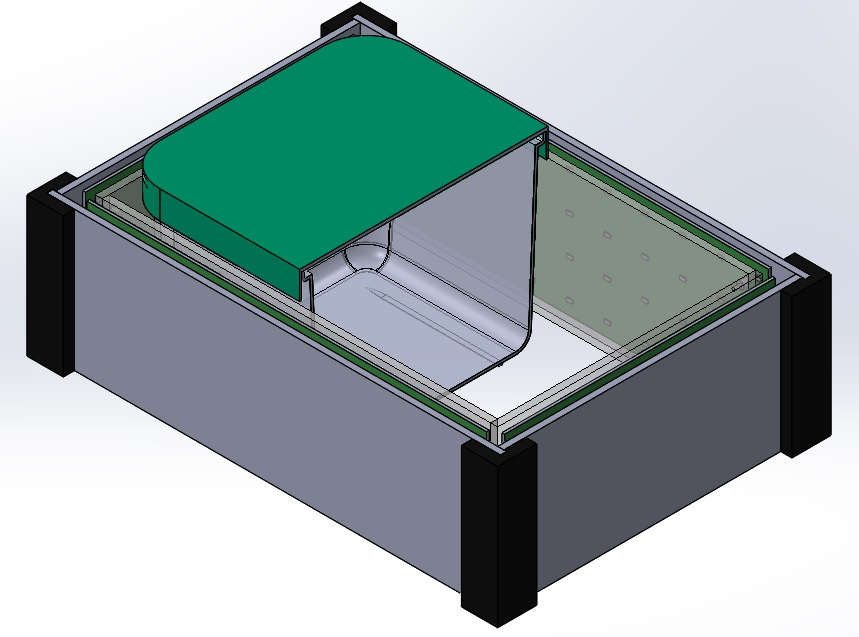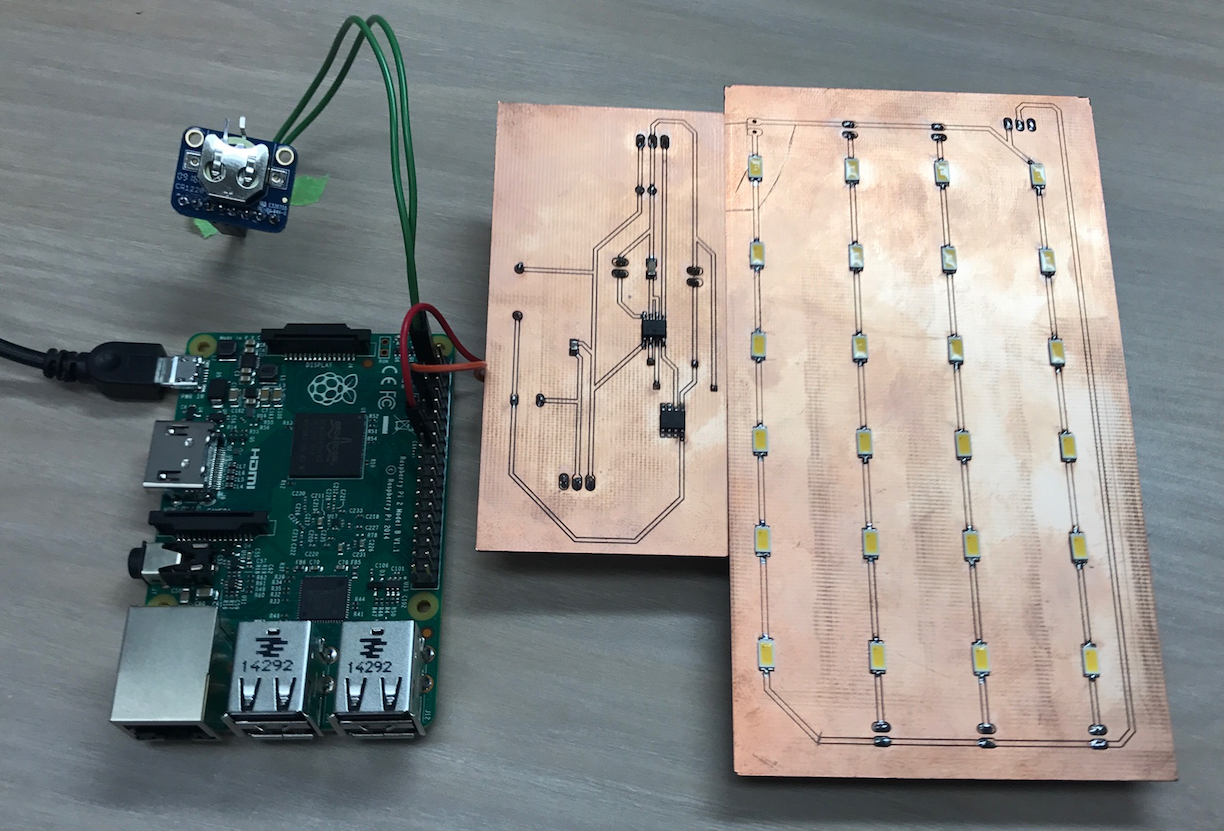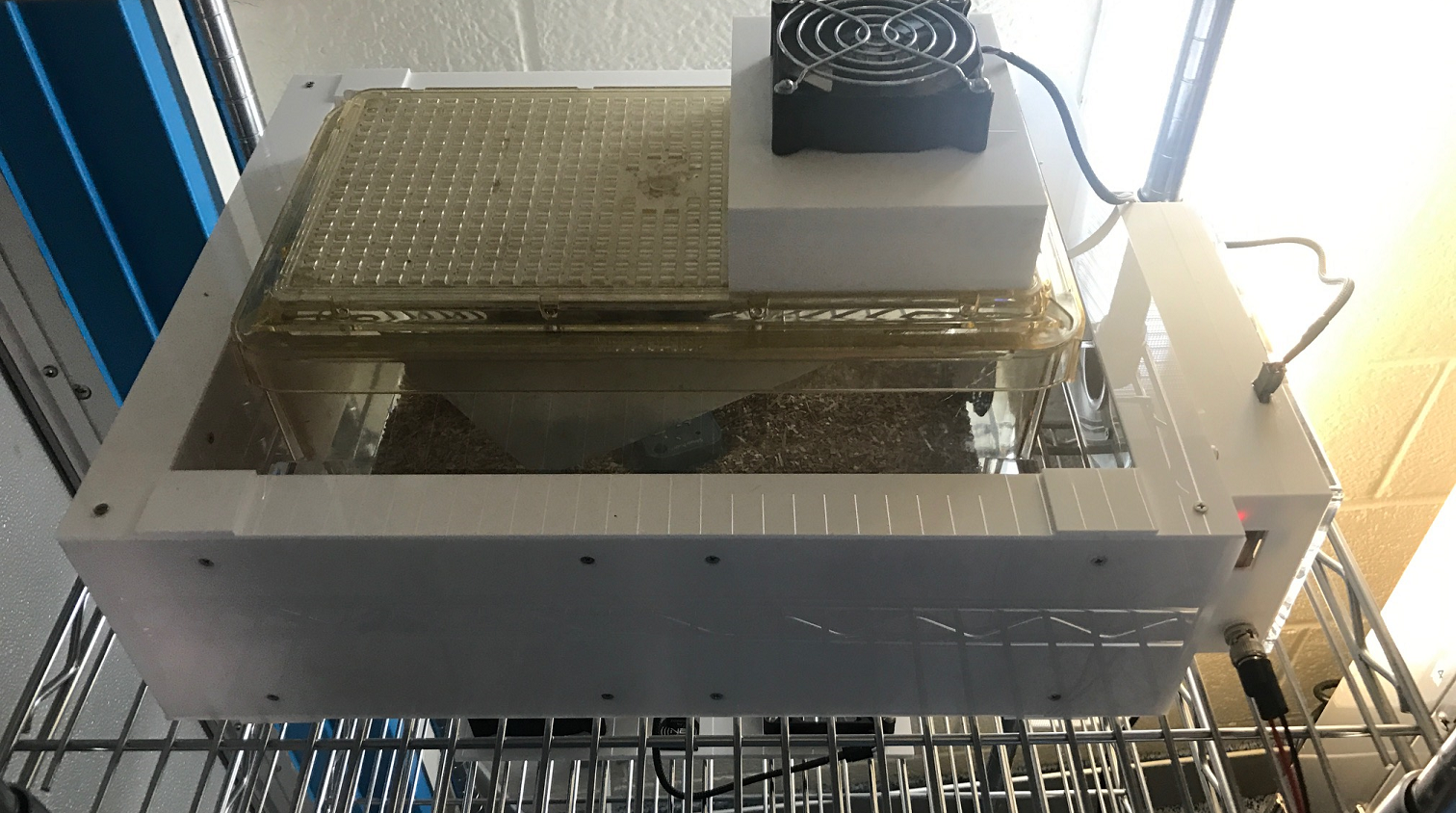Collaborators
Project Brief
The goal of this project is to enable light stress experiments at chronic light exposure duration on transgenic mice harboring knockin mutations in the RPE65 gene.
The retinal pigment epithelium (RPE) is a layer of retinal cells essential for visual function. Many retinal diseases resulting in blindness are caused by defects in the RPE. The Molecular Mechanisms Section has identified a gene, RPE65, expressed highly preferentially in the RPE. Mutations in the RPE65 gene cause autosomal recessive early-onset severe human retinal dystrophies, including Leber congenital amaurosis type 2 (LCA2) and autosomal recessive retinitis pigmentosa (arRP).
Transgenic mice harboring knockin mutations in the RPE65 gene have been generated by the Molecular Mechanisms Section. These mutations (including, but not limited to, P25L and H182Y) are associated with mild phenotypes of human LCA disease. Because the light exposure in normal mouse husbandry during the 12-hour ‘daytime’ cycle is not equivalent to a normal human daytime visual experience (i.e., ~ 50 lux in the mouse cage compared to the ~100,000 lux humans can experience on a sunny day), the true effect of the reduced chromophore output in these knockins is not apparent as chromophore levels are maintained. This is due to limited phototransduction and continuous regeneration, despite the lower regeneration level than wild type mice. Electroretinography studies measuring recovery from a strong visual stimulus (i.e., ’bleaching effect‘ of the photoreceptors) show delayed recovery kinetics consistent with a limited level of regeneration, but additional outcome measures are needed to determine chromophore requirements for cone survival. Therefore, the Molecular Mechanisms Section would like to conduct light stress experiments at chronic light exposure duration in which animals are subject to moderate light levels (effective level of 500-1500 lux for 2-4 weeks on undilated eyes).
To enable the above experiments, SPIS engineers are designing and building an illumination control system that surrounds all four sides of the standard mouse cage. LEDs outputting a broad spectrum will be used to more closely simulate sunlight for the experiments. A Raspberry Pi single-board computer will provide the pulse width modulation control signal to LED array driving electronics to programmatically maintain the desired illumination level during the 12-hour daytime cycle, and turn off the illumination during the 12-hour night cycle. Finally, a real-time clock will be integrated into the control hardware to enable timekeeping even when the system loses power or is unplugged for normal animal care procedures. After construction and validation of the prototype unit, at least 9 additional units will be produced to enable higher throughput experiments.



